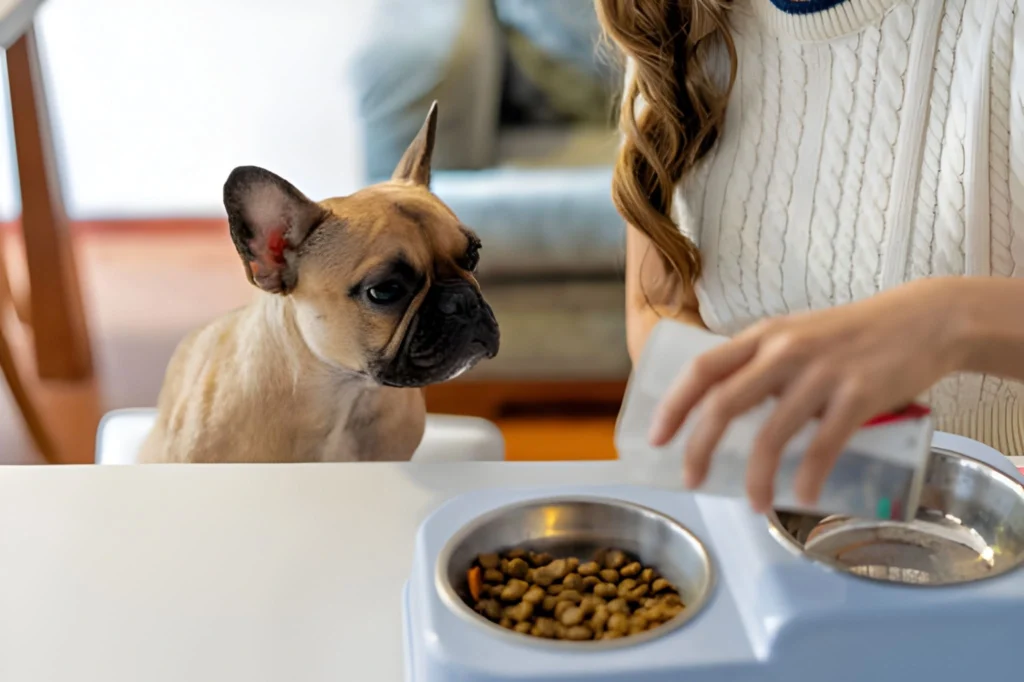
The pet food aisle looks completely different than it did ten years ago. Walk down any pet store row and you’ll see dozens of brands promising “premium,” “artisanal,” or “craft” dog food where there used to be maybe five big names. But here’s the thing – not all of these fancy-looking bags actually deliver better nutrition for your dog.
Some of these smaller brands really do offer superior products that justify their higher prices. Others are mostly clever marketing wrapped around ingredients that aren’t much different from cheaper alternatives. Pet owners end up paying premium prices for what amounts to regular dog food in prettier packaging.
The tricky part is figuring out which brands actually walk the walk. Expensive doesn’t automatically mean better, and natural-sounding ingredient lists don’t always translate to meaningful health benefits. Dogs can’t tell us if their food tastes better or makes them feel great, so we have to dig into what these companies are actually doing differently.
Where the Good Stuff Really Comes From
The biggest difference between premium and regular dog food usually starts way before manufacturing – it’s all about where they get their ingredients. Mass-market brands buy from whoever offers the lowest price that week. Premium brands often work with the same suppliers consistently, building relationships that let them maintain better quality control.
Think about it like restaurant food versus frozen dinners. Chain restaurants might source their chicken from different suppliers depending on who’s cheapest, while a high-end restaurant probably has agreements with specific farms they trust. Same concept applies to dog food.
This matters because ingredient quality can vary wildly. “Chicken meal” on a label could come from healthy chickens raised on good farms, or it could come from processing plants that handle lower-grade meat. Premium brands usually know exactly where their protein comes from and can give you details if you ask.
Many smaller companies that originated in Victoria and similar regions focus heavily on building direct relationships with local farmers. This approach costs more but gives them much better control over what goes into their products.
The protein sources tell the whole story. Budget brands often use vague terms like “meat meal” or “poultry by-product.” Premium brands will specify “deboned chicken” or “grass-fed beef” and often include information about how those animals were raised. That specificity usually means they actually know and care about their supply chain.
Small Batches, Big Differences
Manufacturing in smaller batches might sound like marketing fluff, but it actually makes a real difference in quality control. When you’re making 100 bags at a time instead of 10,000, you can catch problems faster and make adjustments on the fly.
The heat used during processing affects how much nutrition survives in the final product. Premium manufacturers often use lower temperatures and shorter processing times, which preserves more vitamins and makes proteins easier to digest. This approach slows down production and increases costs, but the end result is more nutritious food.
Most people don’t think about packaging, but it matters more than you’d expect. Cheap bags let air in, which makes fats go rancid and destroys vitamins over time. Premium brands invest in better packaging materials and sometimes add oxygen absorbers to keep food fresher longer.
The attention to detail extends to kibble consistency too. Mass production facilities prioritize speed, which can lead to uneven cooking and inconsistent nutrient distribution. Smaller operations can monitor each batch more carefully.
Different Approach to Nutrition
Premium brands often take a completely different philosophy when it comes to dog nutrition. Instead of just meeting minimum requirements set by regulatory agencies, they try to optimize nutrition based on current research about what dogs actually need.
Many artisanal brands emphasize higher protein content and use more digestible carbohydrate sources. They’re also more likely to include ingredients that provide nutrients naturally rather than adding synthetic vitamins after processing.
Recipe development at these companies usually involves more testing and refinement. Large manufacturers might rely on computer modeling to create formulas that meet basic standards. Smaller brands often do longer feeding trials with real dogs to see how their recipes perform in practice.
The supplement approach differs too. Instead of spraying synthetic vitamins onto finished kibble, premium brands often choose ingredients that are naturally rich in the nutrients dogs need. Whether this makes a meaningful difference is debatable, but it shows a different mindset about nutrition.
They Actually Tell You What They’re Doing
One of the clearest differences between premium and mass-market dog food is transparency. Artisanal brands typically share detailed information about their ingredients, sourcing, and manufacturing processes. Big brands often keep this information vague or hard to find.
Customer service is usually much more personal too. With smaller customer bases, premium brands can offer more individual attention. You can often email directly with company founders or talk to their nutritionists about specific questions. Try getting that kind of access at a major pet food corporation.
Many premium brands actively work with veterinarians and pet nutritionists, not just for endorsements but for genuine feedback on their products. This scientific approach to product development contrasts sharply with the primarily marketing-driven strategies you see from larger companies.
Testing and Quality Control
Premium manufacturers typically go beyond minimum regulatory requirements when it comes to testing their products. They test more frequently, check for more potential contaminants, and often submit their products for voluntary third-party certification.
Traceability is another big advantage. If there’s ever a problem with a batch of food, premium brands can usually trace ingredients back to specific suppliers and production dates. This detailed record-keeping helps them identify and fix problems quickly instead of having to issue broad recalls.
Is the Extra Cost Worth It?
Premium dry dog food definitely costs more – sometimes two or three times as much as grocery store brands. But the price difference often reflects real improvements in ingredient quality, manufacturing processes, and quality control measures.
Here’s something many people don’t consider: dogs often need to eat less of high-quality food to get the same nutrition. The higher digestibility means more of what they eat actually gets absorbed and used by their bodies. When you factor in smaller serving sizes, the cost per day might not be as different as the sticker price suggests.
There’s also the potential for long-term savings. Dogs fed better diets often have fewer digestive problems, better coat condition, and more stable energy levels. That can translate to fewer vet visits and lower medical costs over time, though obviously there’s no guarantee.
Cutting Through the Marketing
Not every expensive dog food is worth the money, and plenty of marketing claims don’t hold up to scrutiny. Focus on companies that provide specific information about their ingredients and processes rather than just using buzzwords like “natural” or “premium.”
Look at the company behind the brand, not just the product claims. Do they have actual nutritional expertise? Are their manufacturing practices transparent? Do they communicate honestly about their processes, or do they rely on vague feel-good language?
Consider your specific dog’s needs too. A young, active dog might benefit more from premium nutrition than an older, less active pet. Dogs with sensitive stomachs might do better on simpler formulations regardless of how premium the ingredients are.
The best premium dry dog food combines quality ingredients with proper formulation and careful manufacturing. When all those factors come together, you get products that justify their higher cost through genuine advantages in nutrition and safety. The key is learning to spot the difference between real quality and expensive marketing.









